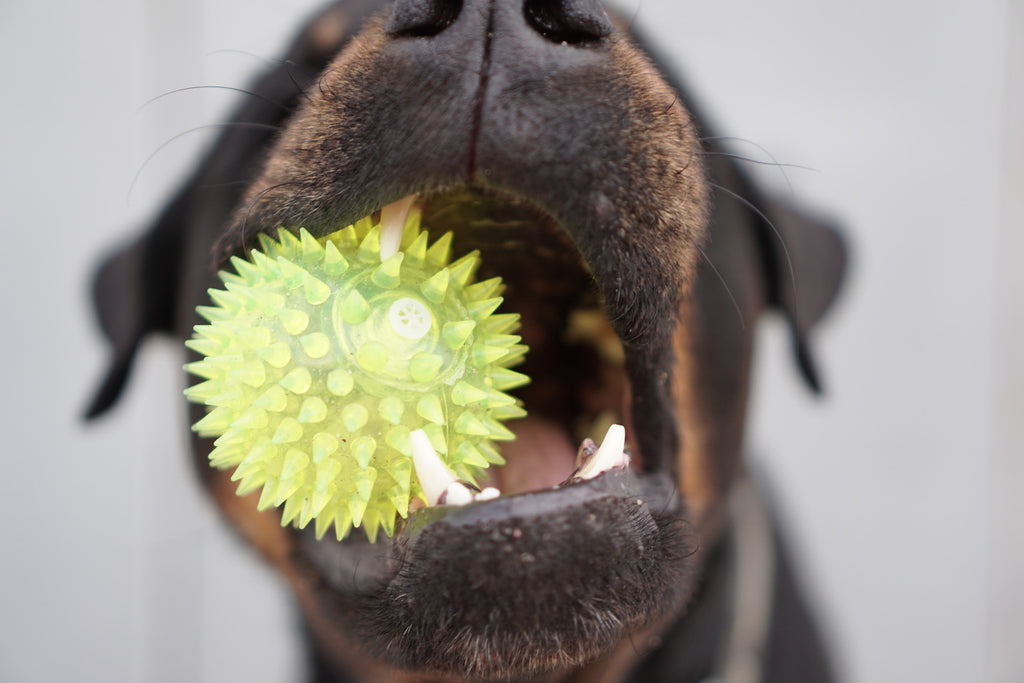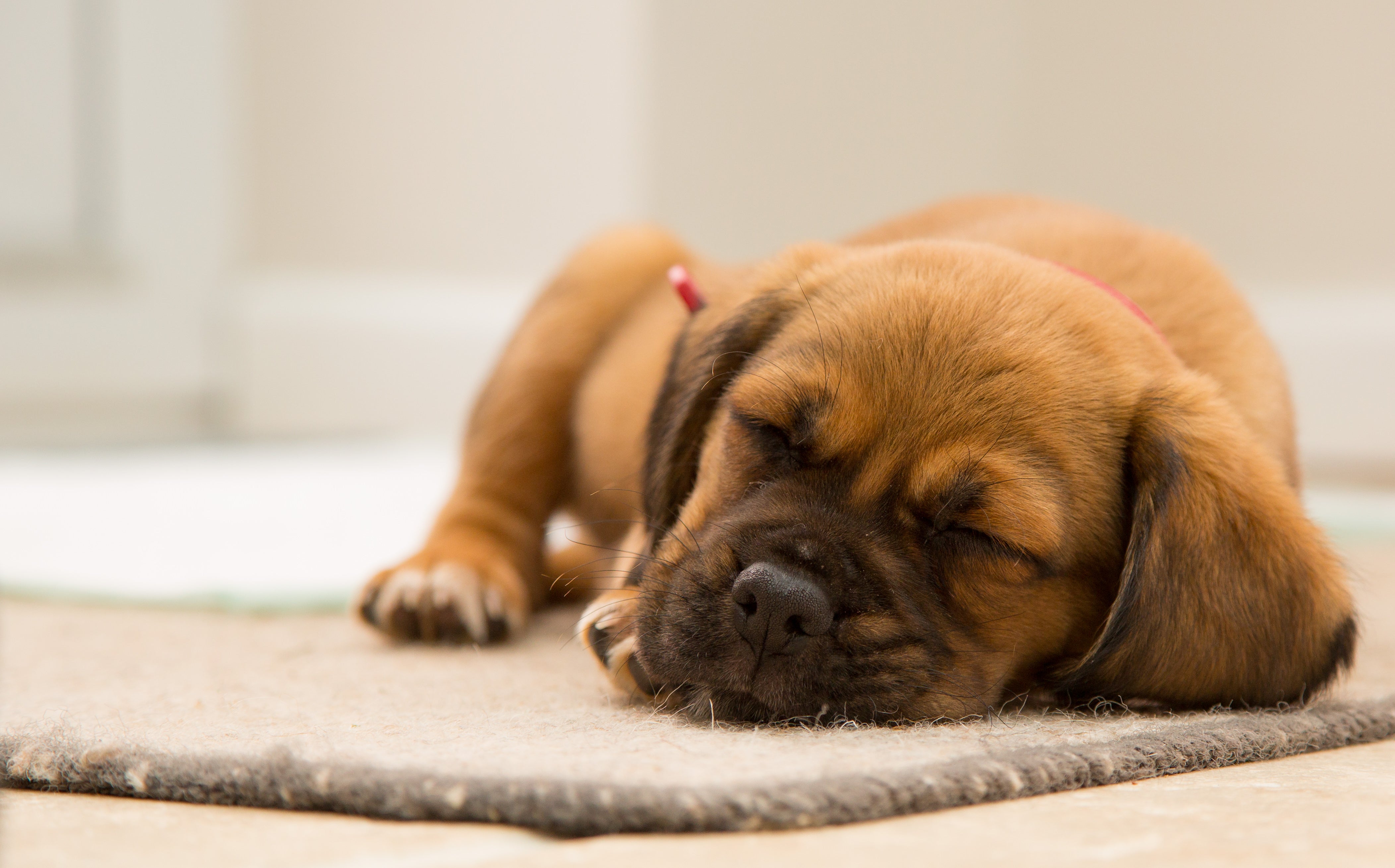9 ways to wear out your dog without leaving the house

Indoor Exercise Ideas for Every Dog
We’re going to go ahead and say this first - there really isn’t one 100% equal substitute for a good old fashioned walk around the block for you and your pooch. Walking is not only beneficial for both of your physical health, it also provides mental stimulation as well as an emotional bonding experience for you and your dog. Regular walking also helps to preserve “muscle tone and joint movement” in dogs according to the American Veterinary Medicine Association. For these reasons, we are going to highly suggest that the indoor exercise for dogs ideas listed below are used in addition to a regular outdoor walking routine.
It may be due to a frosty cold front or increased social distancing restrictions, but we all know that sometimes there are those days where it seems all-but-impossible to leave the couch much less the house. Here are a nine ways that you can add some extra oomph to your dog’s fitness regimen without leaving the "great indoors."
1. Play fetch

Yes, THAT fetch! It doesn’t get a whole lot easier than this if you're looking to exercise your dog indoors. Here is the Reader’s Digest Version:
- Step ONE - Throw literally any ball, toy, or object that has caught the attention of your dog.
- Step TWO - Watch your dog chase the thrown object.
- Step THREE - With varying degrees of success, your dog will now return this object to you.
- Step THREE.POINT.FIVE - If your dog does not return this object to you, now you will get some exercise and retrieve said object from your dog.
- Step FOUR - Repeat until your dog and/or you are too tired to repeat any longer!
If your dog’s fetch skills are making this game more cardiovascularly taxing for you than for them, TheSpruce has a helpful guide to training your dog to fetch.
2. Hit the Stairs

Depending on the age, health, and breed of your dog, you may choose to have them either walk or run up and down the stairs. If you have an indoor staircase in your home, you have a powerful piece of workout equipment to get your dog in tip top shape as well as tire out your dog in no time. Stair exercises provide several additional health benefits to dogs including: improved balance and coordination, increased range of motion, and strengthens multiple muscle groups including legs, lower back, hips, and shoulders.
Walking up and down stairs requires more control than running and is also a better option for building muscle and range of motion. If your dog is healthy, has no hip or joint issues, and requires a lot of cardiovascular exercise, then running may be the option for you. Stair climbing is not a good choice for senior dogs, puppies under 3 months old, breeds with elongated spines prone to intervertebral disc disease (like basset hounds and dachshunds), and dogs with active injuries.
3. Hide and Seek

Dogs are known for having intelligence comparable to a toddler/small child, so it should come as no surprise that they love to play hide and seek! All your dog needs to get started with this indoor game is a solid grasp of the “Stay” command. Otherwise, your hiding options are going to be rather limited. Once you have chosen a hiding spot, call your dog’s name and encourage them to “find” you. This game is great for strengthening recall and providing mental stimulation to your dog, both of which are important assets gained from regular outdoor walks and training.
4. Use meal times for training

If you’re looking to spend more time indoors with your dog, it's important to make sure you don’t start overfeeding or “over-treating” your pet. Try redistributing your pets regular meals as their motivational treats for indoor exercise or at least consider using a puzzle feeder bowl to help them burn some mental calories before inhaling their meals. Dry food or kibble from meal time can also be repurposed as treats for your dog's obstacle course, ways to fill their favorite puzzle toys, as well as any other aids to their indoor activities that you may need.
5. Tug of War

Tug of War can be one of the most enjoyable games for dogs, and regularly playing tug games can strengthen the bond between a dog and their owner. K9 police dogs are often treated with a game of tug after completing a certain number of searches. In addition to burning off extra mental and physical energy, tug of war actually helps dogs build confidence and self-control. Healthy games of tug should always be initiated and controlled by the owner, making sure to insert breaks if your dog seems overstimulated or extra-possessive. Tug-of-war is not a good indoor exercise choice for high arousal dogs or dogs that have any history of aggression.
6. Create an indoor obstacle course

AKC Agility here we come! Use common items from around your house to turn your living room into an obstacle course for your dog. Customize your course depending on your dog repertoire of new tricks as well as the amount of available space in your home. Whether you have a tunnels and weaving events set up or a “sit-for-head-pats” station, your dog will appreciate the physical and mental stimulation, and an indoor obstacle course is a great way to make your dog feel useful as well as tire them out. Make sure to treat your dog for progress made on their obstacle course. This can be one way to redistribute their regular food from meal times.
7. Puzzle Toys

There is a reason that the iconic KONG brand has long been a favorite of many dogs for over 30 years -- yes, it was started in the 1970’s. The original KONG was actually modeled after a snowman shaped rubber car part that the creator’s dog couldn’t get enough of. These days, KONG toys are available in over a hundred varieties, and they are still a great way to keep your dog entertained with their unpredictable bounce. There are even Pinterest boards dedicated to favorite “KONG Recipes.” You can combine several of our options to exercise your dog indoors by stuffing your dog's favorite toy, hiding the toy, and having your pup go find and get all the yummy treats from inside the toy for extended fun and exercise.
8. Teach your dog to walk on a treadmill

Although it may sound too “futuristic” to be true, you can actually teach most dogs to use a treadmill to supplement their outdoor walking. A regular, human-sized treadmill will work for most dogs, although extra large dogs may require a specialized treadmill designed with their species in mind. First, acclimate your dog to standing on the treadmill with it powered off using commands they are familiar with, “up,” “sit,” “stay,” etc. Put on your dog’s leash and hold leash while starting treadmill at lowest speed. Verbally encourage your dog to walk to stay towards the front of the treadmill. If your dog is doing well, gradually increase the speed. If your dog shows signs of distress or anxiety, reduce the speed.
9. Work from home 2.0 - give your dog a job

It is often said that “a working dog is a happy dog,” so it seems pretty straightforward that finding your dog a job around the house would help them burn off that excess mental and physical energy. Fetching the newspaper is just the beginning of giving your dog a household chore. You can find online resources to teach and train your dog on the following tasks: closing doors around the house, put away their toys, and even to wake up or deliver messages to the members of your family by name. With some extra training, you may find your pet serving as your new personal assistant.
How much exercise does my dog need?
“It depends on your dog” is not usually what pet owners are searching for on the internet, but it holds true as the best answer here as with many other questions. All dogs need exercise every day and the amount of physical exercise required can vary quite a bit depending on the dog.
Although it depends on the age, health, and breed of your particular pup, here are the daily walking time/exercise requirements broken down by breed type.

*Brachycephalic means “short headed” and refers to breeds of dogs prone to obtrusive breathing and overheating due to the shape of their head, muzzle, and throat.
Sources:
- https://www.avma.org/resources-tools/pet-owners/petcare/walking-your-pet
- https://www.academyanimal.com/how-to-know-if-your-dog-needs-longer-walks
- https://www.acvs.org/small-animal/brachycephalic-syndrome
- https://www.thesprucepets.com/train-a-dog-to-fetch-1117283
- https://www.akc.org/expert-advice/lifestyle/dog-tug-of-war-dog-myths-debunked/













